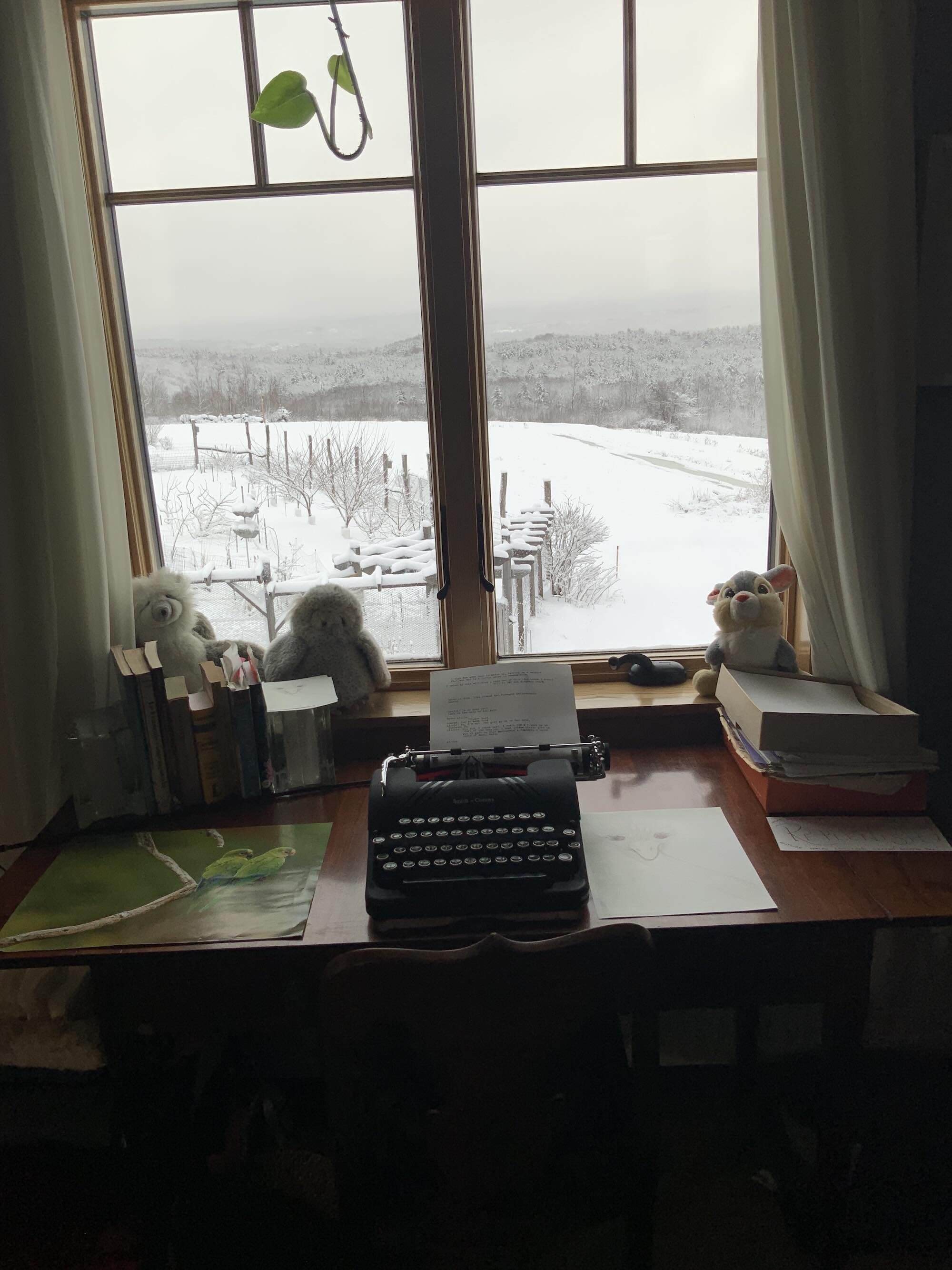Progress?
I set up my new old manual Smith Corona with a view of its own, out the window. When I sit down, I have my stuffed animals about me and the cats who, surprising but true, don’t react when I start to tap as they do to my flute playing. I would take that as an insult but, in fact, it’s a relief. Rather than have them wince and meow at me as I play, they run as soon as I open the flute case. But the typewriter? They look at me as if to say, “Oh, really? Must you?” But otherwise, Talulah might join me to watch the movement of my fingers and the consequence of those movements: the quick lift and snap of the typebars, which are the metal arms with—love this word—typeslugs on their ends. The typeslugs are the letters, which are whacked out as the typeslugs strike the ribbon and then the paper. An exciting event . . . for awhile but then the cats yawn and wander off to more peaceful environs or remain flopped where they were before I began.
It's so different to type on a manual typewriter. Definitely a step up from my illegible handwriting. And I will likely type the children’s story I have in mind on it because it holds the same visceral-ness as handwriting. But the typeslugs and their arms keep getting tangled up. So I have to convince myself to type slower. Which will result in a whole new way of writing.
You know that feeling when you’re cruising along on one of those moving walkways in the airport and then you step off it and you stumble? That’s what it feels like to go from a computer to a manual typewriter. You’re cruising along and then Boof!
The manual typewriter is more physical. A smidge clumsy. My pinky needs to go to the gym to lift weights, so as to gain the strength to hit that Z key to hard enough to mark the page.
And when I go back to the computer keyboard, the flow and tap of the keys of the keyboard transferring the ideas in my head into words in my computer, all at a pace that nearly matches the speed of of my brain, yet holds an absence that I still have to study. It feels more superficial, not as physical. Even though the speed is a freedom, too. The ideas can flow and result in a more legible product. And yet…. I imagine this must be what it was like for people when the typewriter first came out and they switched from a feather pen to a metal machine. Progress! But what’s being lost?
I’ll have more to say on the topic of this manual typewriter that I spent (I’m not going to say how much money) on. Suffice it to say it was more than the $25 I spent on the Royal manual typewriter I found at an antique store a few weeks ago. But this Smith Corona is supposed to be in perfect shape, “best” shape, because that’s what I paid for. So when the TAB button didn’t work I forgave it. Because it’s old. But then I reached the end of the brand-new ribbon and pressed the REVERSE button. It didn’t reverse.
Long story short, the brand new old manual isn’t working and I have an email in to the company who sold it to me. I’m not holding my breath. Because they work in old-time time. Telephones. Snail mail. Manual typewriters. Thus, not only have I slowed down, but I’m at a complete stop. How appropriate. I just started a book titled How to Do Nothing by Jenny Odell.
